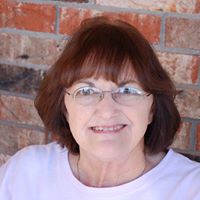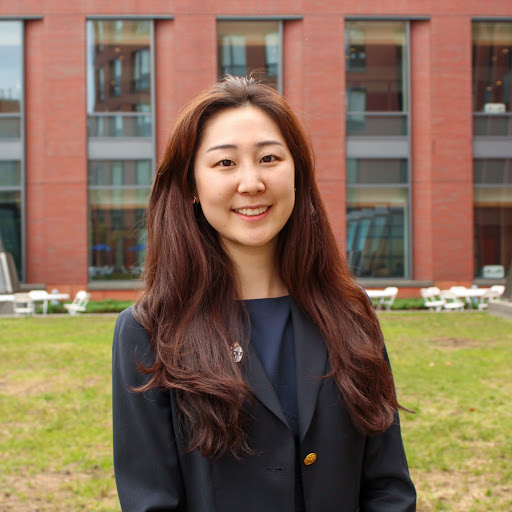Ruby L Lee
age ~58
from Campbell, CA
- Also known as:
-
- Ruby L Chen
- Phone and address:
- 1821 Palo Santo Dr, Campbell, CA 95008
Ruby Lee Phones & Addresses
- 1821 Palo Santo Dr, Campbell, CA 95008
- Mesa, AZ
- Chandler, AZ
- Saratoga, CA
- Santa Clara, CA
- Cupertino, CA
- San Jose, CA
Medicine Doctors

Ruby E-Jean Lee
view sourceSpecialties:
Psychiatry
Anatomic Pathology & Clinical Pathology
Anatomic Pathology & Clinical Pathology
Education:
Texas A&M University(2007)
Lawyers & Attorneys

Ruby Wing-Nga Lee - Lawyer
view sourceLicenses:
Virginia - Authorized to practice law 2005

Ruby Lee - Lawyer
view sourceSpecialties:
Immigration and Naturalization
Labor and Employment
Labor and Employment
ISLN:
918506823
Admitted:
2005
University:
Boston University, B.A., 2001
Law School:
University of Richmond, J.D., 2005
Name / Title
Company / Classification
Phones & Addresses
Managing
Rc Lee Investments, LLC
Real Estate Investments and Purchase.
Real Estate Investments and Purchase.
5002 Lakeview Dr, San Ramon, CA 94582
Us Patents
-
Processor For Performing Subword Permutations And Combinations
view source -
US Patent:6381690, Apr 30, 2002
-
Filed:Aug 1, 1995
-
Appl. No.:08/509867
-
Inventors:Ruby B. Lee - Los Altos Hills CA
-
Assignee:Hewlett-Packard Company - Palo Alto CA
-
International Classification:G06F 9315
-
US Classification:712223, 345522, 377 67
-
Abstract:An apparatus for operating on the contents of an input register to generate the contents of an output register which contains a permutation, with or without repetitions, or a combination of the contents of the input register. The apparatus partitions the input register into a plurality of sub-words, each sub-word being characterized by a location in the input register and a length greater than one bit. In response to an instruction specifying a rearrangement of the input register, the present invention directs at least one of the sub-words in the input register to a location in the output register that differs from the location occupied by the sub-word in the input register. The ordering of the sub-words in the output register differ from the order obtainable by a single shift instruction. In the preferred embodiment of the present invention, the invention is implemented by modifying a conventional shifter comprising a plurality of layers of multiplexers. The modification comprises independently setting the control signals for at least one of the multiplexers in at least one of the layers.
-
Parallel Adding And Averaging Circuit And Method
view source -
US Patent:58838244, Mar 16, 1999
-
Filed:Nov 29, 1993
-
Appl. No.:8/158649
-
Inventors:Ruby Bei-Loh Lee - Los Altos Hills CA
John Paul Beck - Tyngsborough MA -
Assignee:Hewlett-Packard Company - Palo Alto CA
-
International Classification:G06F 738
G06F 750 -
US Classification:364734
-
Abstract:An apparatus that can also be used for generating the average of two integers. The apparatus can be divided into a plurality of sub-adders that operate on sub-words of the input integers in parallel. Hence, the adder can be used for adding or subtracting one set of two integers wherein each integer is of some predetermined length or a plurality of sets of two integers provided the sum of the lengths of the integers is less than or equal to this predetermined length. The apparatus can also generate the sum, or difference, of each of the sub-words divided by two. The parallel operations can be carried out in response to a single instruction. The results of the division by two are rounded in a manner that eliminates biasing of the results.
-
Parallel Shift And Add Circuit And Method
view source -
US Patent:53901355, Feb 14, 1995
-
Filed:Nov 29, 1993
-
Appl. No.:8/158646
-
Inventors:Ruby B. Lee - Los Altos Hills CA
Joel D. Lamb - Fort Collins CO -
Assignee:Hewlett-Packard - Palo Alto CA
-
International Classification:G06F 738
G06F 750 -
US Classification:364749
-
Abstract:An apparatus for combining the contents of an X register, shifted by m places, with the contents of a Y register to generate a result Z. The functional unit can also be configured to perform parallel operations on sub-operands in the X and Y registers. The division of the apparatus into sub-operands is controlled by a mask which specifies the boundary of the sub-operands. The shifting operation is accomplished by multiplexers that connect the p. sup. th bit of the X register to the adder stage that operates on bit Y. sub. p-m of the Y register. Circuitry is provided at the boundary of the sub-operands to prevent the bit signals corresponding to the X register from being routed across a sub-operand boundary. Similarly, circuitry is provided for preventing the carry output of an adder stage that operates on one sub-operand from being propagated to an adder stage that operates on another sub-operand.
-
Efficient Hardware Handling Of Positive And Negative Overflow Resulting From Arithmetic Operations
view source -
US Patent:54485096, Sep 5, 1995
-
Filed:Dec 8, 1993
-
Appl. No.:8/163960
-
Inventors:Ruby B. Lee - Los Altos CA
Joel D. Lamb - Fort Collins CO -
Assignee:Hewlett-Packard Company - Palo Alto CA
-
International Classification:G06F 700
G06F 1100 -
US Classification:364737
-
Abstract:A computer system provides handling of positive and negative overflow. A first arithmetic operation is performed on a first n-bit unsigned binary operand and a second n-bit signed binary operand to produce an n-bit unsigned binary result. Overflow detection logic circuitry within the arithmetic logic unit detects positive overflow or negative overflow resulting from the arithmetic operation. When there is a positive overflow, saturation logic replaces the output of the two's complement adder with a value of 2. sup. n-1. When there is a negative overflow, the saturation logic replaces the output of the two's complement adder with a value of 0. In an alternate embodiment, a first arithmetic operation is performed on a first n-bit signed binary operand and a second n-bit signed binary operand to produce an n-bit positive signed binary result. For example the arithmetic operation is an addition or subtraction performed by a two's complement adder. In the alternate embodiment, overflow detection logic circuitry within the arithmetic logic unit detects positive overflow or negative overflow resulting from the arithmetic operation.
-
Computer Providing Flexible Processor Extension, Flexible Instruction Set Extension, And Implicit Emulation For Upward Software Compatibility
view source -
US Patent:47632429, Aug 9, 1988
-
Filed:Oct 23, 1985
-
Appl. No.:6/790570
-
Inventors:Ruby B. Lee - Cupertino CA
Michael J. Mahon - San Jose CA -
Assignee:Hewlett-Packard Company - Palo Alto CA
-
International Classification:G06F 900
-
US Classification:364200
-
Abstract:A computer and an instruction set are presented which allow for a number of assists to be easily incorporated into the computer, and which allow for an instruction set extension. The computer is designed to support instructions which move data between an assist and a location, although an assist's operation and design need not be defined at the computer's date of design. Instructions are mapped to a particular assist. Assist instructions can be either executed in hardware by an assist, or emulated in software via a trap.
-
Method And Apparatus For Facilitating Instruction Processing Of A Digital Computer
view source -
US Patent:47220503, Jan 26, 1988
-
Filed:Mar 27, 1986
-
Appl. No.:6/845213
-
Inventors:Ruby B. Lee - Cupertino CA
Allen J. Baum - Palo Alto CA
Russell Kao - Palo Alto CA -
Assignee:Hewlett-Packard Company - Palo Alto CA
-
International Classification:G06F 1300
G06F 930 -
US Classification:364200
-
Abstract:A computer having a cache memory and a main memory is provided with a transformation unit between the main memory and the cache memory so that at least a portion of an information unit retrieved from the main memory may be transformed during retrieval of the information (fetch) from a main memory and prior to storage in the cache memory (cache). In a specific embodiment, an instruction may be predecoded prior to storage in the cache memory. In another embodiment involving a branch instruction, the address of the target of the branch is calculated prior to storing in the instruction cache. The invention has advantages where a particular instruction is repetitively executed since a needed decode operation which has been partially performed previously need not be repeated with each execution of an instruction. Consequently, the latency time of each machine cycle may be reduced, and the overall efficiency of the computing system can be improved. If the architecture defines delayed branch instructions, such branch instructions may be executed in effectively zero machine cycles.
-
Maximal Length Immediates With Fixed Sign Position
view source -
US Patent:48294241, May 9, 1989
-
Filed:Jun 28, 1985
-
Appl. No.:6/750576
-
Inventors:Ruby B. Lee - Cupertino CA
-
Assignee:Hewlett-Packard Company - Palo Alto CA
-
International Classification:G06F 900
-
US Classification:364200
-
Abstract:A computer instruction set is presented in accordance with the preferred embodiment of the present invention. Some instructions within the instruction set have immediate fields which are allowed to vary in length and fill up all unused bit positions in the instructions. A sign bit is in a fixed location for instructions within the instruction set. For example, the sign bit may be right justified with respect to the immediate field, that is the sign bit is put in the least significant (rightmost) bit position. This allows time-critical suboperations to proceed without waiting for the value of the sign bit to be located and decoded.
-
Shift And Rounding Circuit And Method
view source -
US Patent:54249678, Jun 13, 1995
-
Filed:Nov 29, 1993
-
Appl. No.:8/158640
-
Inventors:Ruby B. Lee - Los Altos Hills CA
-
Assignee:Hewlett-Packard Company - Palo Alto CA
-
International Classification:G06F 700
G06F 738 -
US Classification:364745
-
Abstract:A circuit for shifting the bits of an X word to obtain a Y word which is rounded to the nearest odd integer if any bit having the value 1 was shifted off of the word during the shifting operation. The circuit avoids biasing in the integer rounding operation. The shifting operations are accomplished with the aid of multiplexing circuits. The rounding operation is accomplished with the aid of multiplexing circuits that connect the least significant bit of Y to (X. sub. 0 OR X. sub. 1 OR. . . X. sub. m), where m is the number of places by which X is shifted.
Resumes

Associate Product Manager At Google
view sourcePosition:
Associate Product Manager at Google
Location:
San Francisco Bay Area
Industry:
Internet
Work:
Google - Mountain View, CA since Aug 2013
Associate Product Manager
Dorm Room Fund - San Francisco, CA Apr 2013 - Jul 2013
Investment Team
Business Association of Stanford Entrepreneurial Students (BASES) Jun 2012 - Jun 2013
Co-President
Covert Lab - Stanford University Jun 2012 - Jun 2013
Software Engineer
Business Association of Stanford Entrepreneurial Students (BASES) Jun 2011 - Jun 2012
Chief Financial Officer
Associate Product Manager
Dorm Room Fund - San Francisco, CA Apr 2013 - Jul 2013
Investment Team
Business Association of Stanford Entrepreneurial Students (BASES) Jun 2012 - Jun 2013
Co-President
Covert Lab - Stanford University Jun 2012 - Jun 2013
Software Engineer
Business Association of Stanford Entrepreneurial Students (BASES) Jun 2011 - Jun 2012
Chief Financial Officer
Education:
Stanford University 2011 - 2013
Master of Science (M.S.), Computer Science Stanford University 2009 - 2013
Bachelor of Science (B.S.), Bioengineering Shrewsbury High School 2005 - 2009
Master of Science (M.S.), Computer Science Stanford University 2009 - 2013
Bachelor of Science (B.S.), Bioengineering Shrewsbury High School 2005 - 2009
Interests:
Tech entrepreneurship, systems biology, DNA, volleyball, tennis

Ruby Lee
view sourceLocation:
United States

Ruby Lee
view sourceLocation:
United States

Analyst Ll At Bank Of America
view sourcePosition:
Analyst ll at Bank of America
Location:
Phoenix, Arizona Area
Industry:
Banking
Work:
Bank of America
Analyst ll
Analyst ll

Educator/Psychotherapist
view sourcePosition:
Psychology Faculty at Owens Community College, Clinical Therapist at Private Practice, Psychology Faculty/Therapist at Owens Community College/Private Practice
Location:
United States
Industry:
Higher Education
Work:
Owens Community College since Jul 2005
Psychology Faculty
Private Practice since Jul 2005
Clinical Therapist
Owens Community College/Private Practice since Jul 2005
Psychology Faculty/Therapist
Psychology Faculty
Private Practice since Jul 2005
Clinical Therapist
Owens Community College/Private Practice since Jul 2005
Psychology Faculty/Therapist
Education:
Capella University 2006 - 2013
Psy.D Student, Clinical Psychology Michigan School of Professional Psychology 2004 - 2005
Master of Arts (M.A.), Clinical and Humanistic Psychology Lourdes University 2003 - 2004
Bachelor of Arts (BA), Psychology Owens Community College 2000 - 2002
Associate of Arts (A.A.), Concentration In Psychology
Psy.D Student, Clinical Psychology Michigan School of Professional Psychology 2004 - 2005
Master of Arts (M.A.), Clinical and Humanistic Psychology Lourdes University 2003 - 2004
Bachelor of Arts (BA), Psychology Owens Community College 2000 - 2002
Associate of Arts (A.A.), Concentration In Psychology

Ruby Lee
view sourceLocation:
United States
Youtube
Plaxo

Ruby Lee
view source
ruby lee
view sourceMerchandising Manger at li tyao

Ruby Lee
view sourceDistributor at Tesla Energy Lights
Flickr

Ruby Lee
view source
Ruby Brewer Lee
view source
Ruby Barrie Lee
view source
Ruby Lee Jes
view source
Ruby Gamutan Lee
view source
Ruby Escalante Lee
view source
Ruby Lee Robins
view source
Ruby Dolot Lee
view sourceGoogleplus

Ruby Lee
Work:
University of Melbourne - Online community coordinator
RMIT - Multimedia producer (2006-2010)
RMIT - Multimedia producer (2006-2010)
Education:
RMIT University - Web programming, RMIT University - Communications

Ruby Lee
Education:
Stanford University - Computer Science, Stanford University - Bioengineering, Shrewsbury High School
About:
It's roobeelee!

Ruby Lee
Work:
Buhler Sortex Ltd - Placement Electronic Engineer (2011)
Education:
University of Surrey - Electronic Engineering
About:
I'm Ruby, self-taught seamstress and blogging Electronic Engineer. On industrial placement in London, studying at Surrey University : )

Ruby Lee
Education:
PigFarts - Awesome and Fun, Lock Haven University of Pennsylvania - Political Science/Psychology
Relationship:
Married
Bragging Rights:
I have an AWESOME Husband and Two Beautiful and Brilliantly Talented little girls!

Ruby Lee
Work:
Field Research Corp
Education:
University of California, Berkeley - English

Ruby Lee

Ruby Lee
Education:
Alton C. Crews
Tagline:
If you're funny, then I love you

Ruby Lee
Classmates

Ruby Schoen (Lee)
view sourceSchools:
Frankfurt American High School Frankfurt SC 1980-1984
Community:
Denise Stewart, Robert Sachuk

Ruby Lee (Speed)
view sourceSchools:
Seminary High School Seminary MS 1941-1945
Community:
Amanda Stinson

Ruby Lee
view sourceSchools:
Booker T. Washington High School Norfolk VA 2005-2009
Community:
George Mauk

Ruby Lee (Cobb)
view sourceSchools:
Hapeville High School Hapeville GA 1959-1963
Community:
Stanley Abercrombie

Ruby Lee
view sourceSchools:
McNair Elementary School Herndon VA 1974-1978
Community:
Ricardo Gil, Carney Michelle, Dj Kim, Martin Larosa

Ruby Lee
view sourceSchools:
St. Catherine's High School Richmond VA 1994-1998
Community:
Jenny Flowers, Nancy Wills, Betty Holland

Ruby Lee (Norris-pitchford)
view sourceSchools:
Silverton High School Silverton TX 1964-1968
Community:
Rickie Hamilton, Bill Mcintyre, Kelly Bomar, Roger Vandecar, Beth Joiner

Ruby Brown (Lee)
view sourceSchools:
Central High School Natchitoches LA 1959-1962
Community:
Terry Williams, Joyce Dorsey
Get Report for Ruby L Lee from Campbell, CA, age ~58













